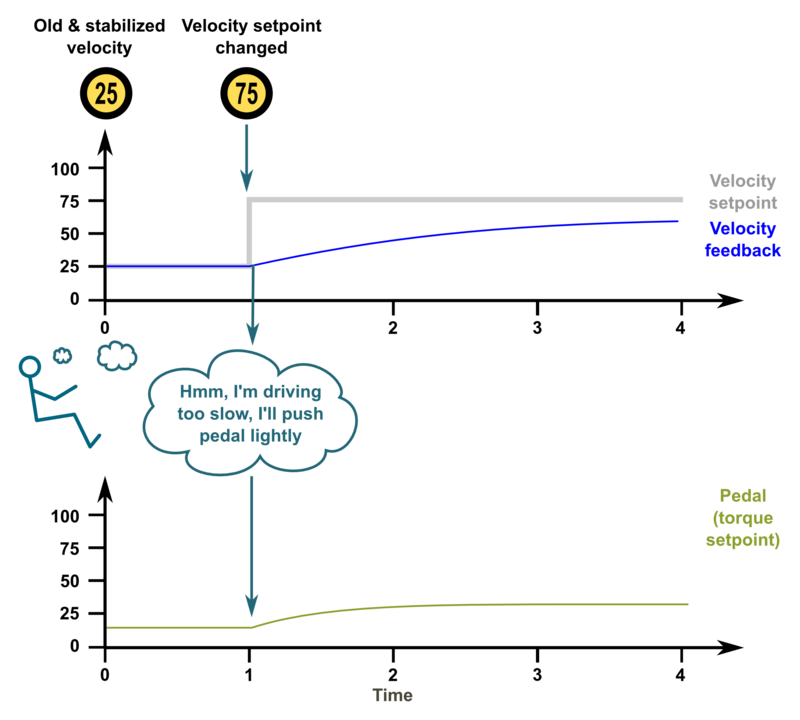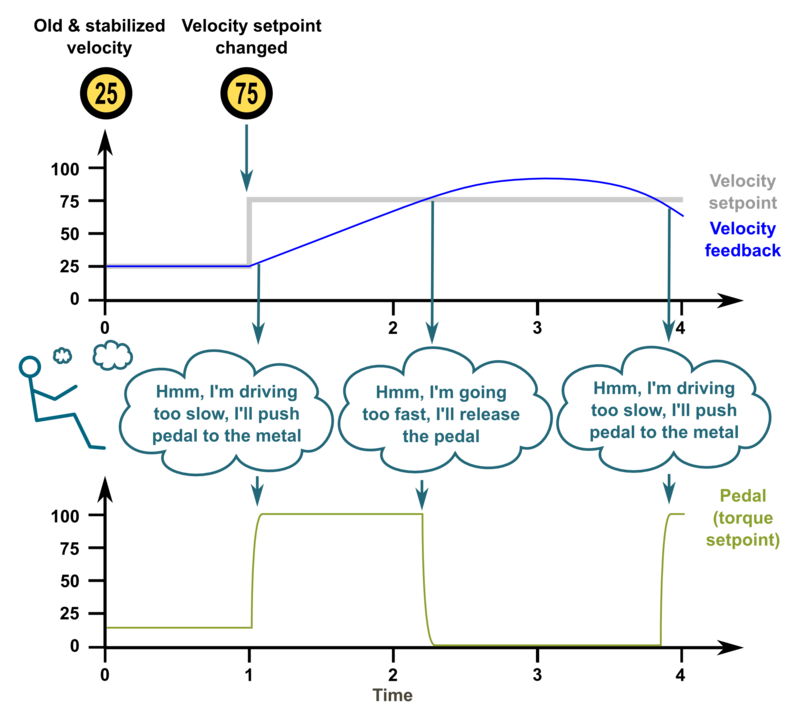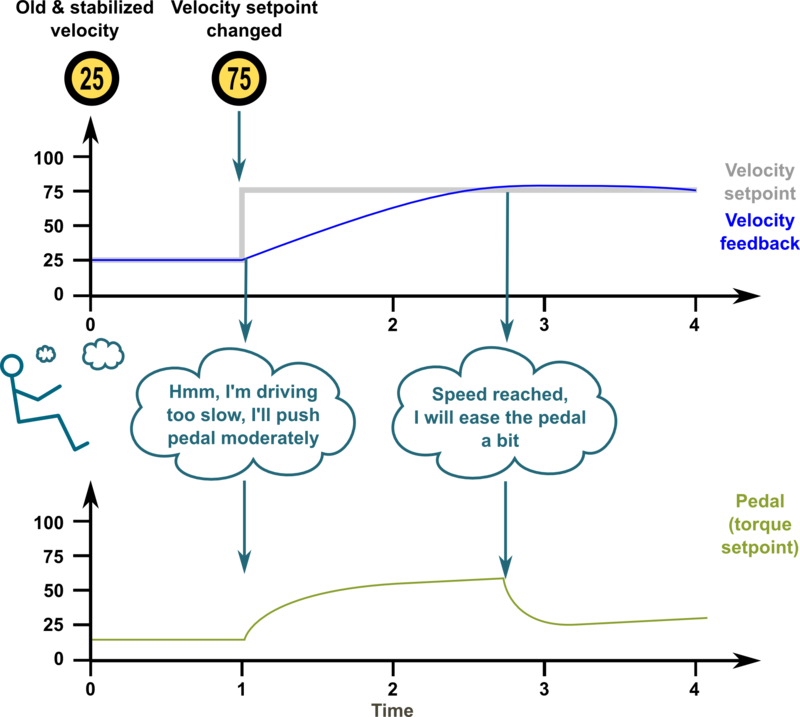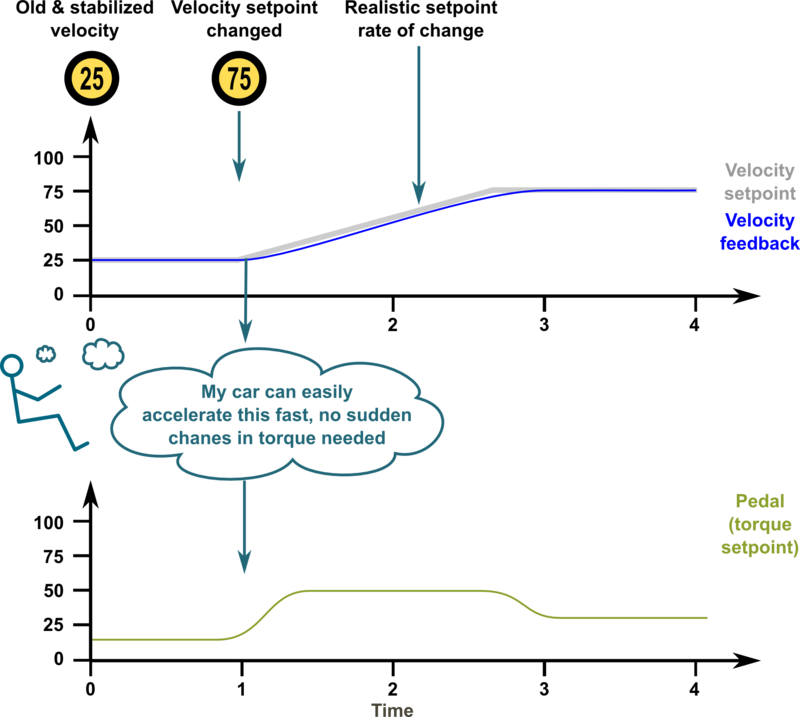Difference between revisions of "Servo tuning basics"
From Granite Devices Knowledge Wiki
| [checked revision] | [checked revision] |
| Line 6: | Line 6: | ||
===Low feedback gain, sluggish response=== | ===Low feedback gain, sluggish response=== | ||
[[File:Carexample sluggish.png|800px]] | [[File:Carexample sluggish.png|800px]] | ||
| − | ===Too high feedback gain, instability=== | + | ===Too high feedback gain, oscillation & instability=== |
[[File:Carexample unstablepng.png|800px]] | [[File:Carexample unstablepng.png|800px]] | ||
| − | ===Optimum feedback gain, | + | ===Optimum feedback gain, only little overshoot=== |
[[File:Carexample stable.png|800px]] | [[File:Carexample stable.png|800px]] | ||
| + | ===Optimum gain with realistic setpoint, optimum response=== | ||
| + | [[File:Carexample response accellimit.png|800px]] | ||
Revision as of 08:38, 12 August 2013
Driving a servo motor is much like driving a car. Driving a car has many similarities including the key concepts of torque, velocity and position control. Most of this happens in the driver's head the same way than a servo drive does with a motor.




